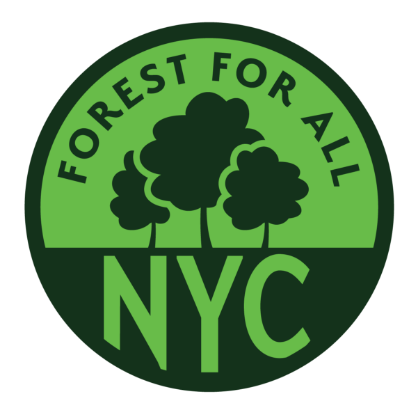Yet despite trees delivering an estimated $260 million in environmental, public health, infrastructure and energy benefits to New York City annually, there is no coordinated municipal vision, plan or dedicated, long-term funding for the management of this essential asset.

While there have been important efforts to expand New York City’s urban forest that illustrate what is possible, far more investment is needed. The Million Trees NYC initiative, launched by Mayor Bloomberg and completed under Mayor de Blasio, was an essential citywide push that expanded our urban forest for our climate-changing world. But new plantings alone are not enough; we need a holistic and strategic plan with stable, long-term funding to maintain, protect and expand our urban forest so that its benefits reach everyone equitably, especially low-income communities and communities of color that have been disproportionally harmed by pollution and lack of green space.
Protecting our trees begins with understanding what we’re working with. New York City’s more than 7 million trees, and their supporting physical and social infrastructure, make up an urban forced that spans our streets, parks, homes, businesses and natural areas. In New York City, that forest is estimated to remove some 1,100 tons of air pollutants and reduce stormwater runoff by 69 million cubic feet annually. Our urban forest also offers mental health benefits. Trees have also been shown to promote healing and contemplation and foster stronger connections between neighbors.
During dangerous heatwaves like the ones this summer, trees provide shade that makes a meaningful difference. They reduce ground temperatures of sidewalks by up to 45° Fahrenheit and reduce summertime air temperatures by up to 9°. In addition to reducing the likelihood of heat-related illnesses, cooling our communities naturally with trees can decrease our use of air conditioners, which strain our energy grid and contribute to blackouts.
But the benefits provided by trees are not equitably distributed. Large swaths of residents — who tend to be lower-income and communities of color, generally in East Harlem, the Bronx and Central Brooklyn — are left especially vulnerable to both the increased burdens of and less protection from heat and air pollution. Little wonder the word “leafy” has become synonymous with wealthier neighborhoods and suburbs.
That’s where Forest for All NYC, a newly-formed citywide coalition of over 30 organizations working to advance a recently released ”NYC Urban Forest Agenda,” comes in. As New York City rebuilds from a global pandemic, we stand at a crossroads for what the trees in our parks and on our streets, can be. We need strategic action; without it, the future of our trees, and of our human communities, remain in jeopardy.
Our agenda presents a clear, visionary roadmap for decisionmakers to restore, protect and grow our arboreal resources in a manner that addresses ongoing injustices, particularly to frontline communities experiencing the most severe impacts of both climate change and public health crises like COVID-19.
Our first priority? Achieving 30% tree canopy cover by 2035. New York City had 22% tree canopy cover in 2017, and forthcoming analysis reveals a potential for approximately 40%. Still, the goal of reaching 30% total coverage is ambitious and requires us to act now.
Increasing tree canopy to 30% by 2035 is the first of a dozen recommendations focused on protecting, maintaining, growing and promoting the urban forest to ensure that its benefits are equitably distributed. We’ve set the table, and now we’re calling on our current and incoming elected officials to join us.
Nobel Maxwell is the New York cities program director at The Nature Conservancy and a member of Forest for All NYC.
